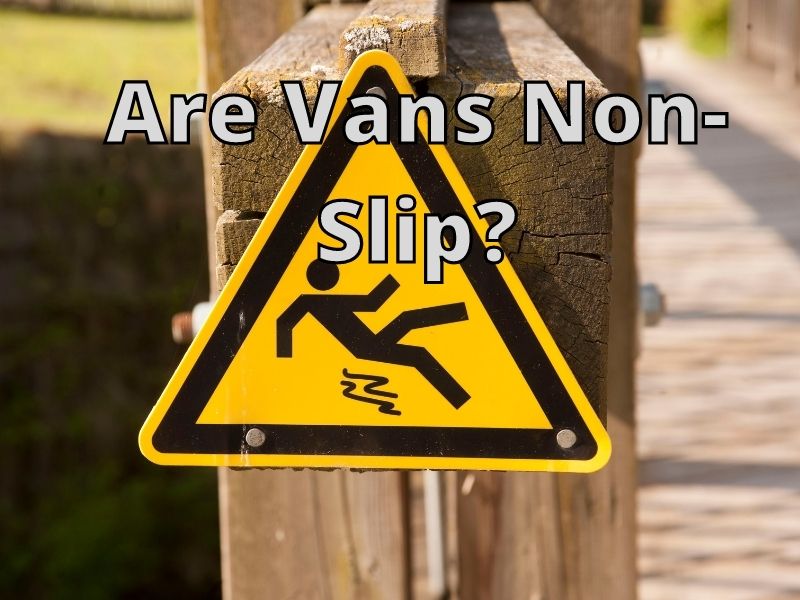Non-slip shoes are imperative for safety no matter where you work. Vans is one reliable brand that offers comfortable shoes for your workplace. But are Vans non-slip?
Vans are non-slip shoes due to their vulcanized rubber outsoles with diamond and rhomboid patterns. Vans use high-quality rubber material for outsoles. The gummy midsole and tread pattern on the outsoles makes Vans even more slip-resistant.
Vans shoes are generally a good choice if you work in a hospital, hotel, or restaurant or have a slippery floor in your office. They may provide the much-needed protection and traction to save you from injuries and accidents.
Are Vans Rubber Soles Any Good?
Yes! Vans rubber-soled shoes are non-slip. They use vulcanized rubber outsoles with a mix of diamond and rhomboid patterns. Slip resistance is a signature feature in Vans since they are specially designed for skateboarders or those who work in slippery environments. These shoes provide excellent grip on any surface and prevent you from slipping, sliding, and falling.
The rubber used in Vans’ outsoles is extremely high quality and provides excellent traction. In addition, the rubber outsoles of Vans are very well designed to offer extreme grip and friction even on wet and slippery surfaces.
In general, these shoes provide excellent grip on any dry and wet surface and prevent you from slipping, sliding, and falling.
Actually, the rubber is toughened by the vulcanizing process. To make the rubber even tougher, they add Sulphur to the rubber mix while keeping it slightly gummy so that it sticks to the surface.
Moreover, the tread pattern on the outsoles makes Vans even more slip-resistant. A grooved shoe sole is better than a smooth one because it provides traction and grips the floor better when walking.
Vans’ outsoles have a pattern that prevents liquid from sticking to them, making them an excellent choice for wet, oily surfaces. The outsole is designed in this way to disperse the liquid away from the sole through the grooved design, thus increasing the slip resistance.
The midsoles of Vans feature three layers of foxing tape rubber to improve traction. This gummy midsole provides grip while walking, running, or skating.
Vans’s excellent grip and support make them a popular choice among skateboarders and restaurant workers. So, if you work in a hospital, at a restaurant, or do any cleaning, Vans can be great non-slip shoes. Even when walking on slippery wet surfaces or walking faster, they will provide you with maximum grip and protection.
Why Are Vans Non-Slip?
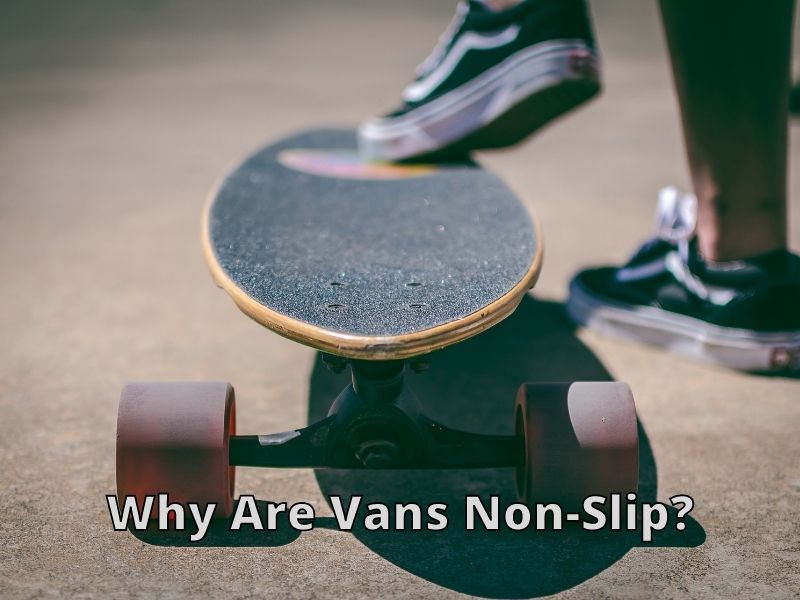
As Vans is a skating brand, Vans shoes are made to be slip-resistant. Slip resistance is the key feature in Vans’ shoes since skaters need non-slip shoes to stay on the skateboard. In addition, these shoes offer enhanced grip on most surfaces and keep you on your feet even on extremely wet or oily surfaces.
Try Vans if you’re looking for comfortable, stylish non-slip shoes. They work great even if you’re working in a restaurant or hospital where you are required to stay on your feet all day or walk on greasy and wet floors all day. Vans are one of the most comfortable shoes that will make your work effortless. There won’t be any slipping or sliding between your work.
Vans are especially popular among skateboarders, BMX riders, and restaurant workers because they are non-slip and provide excellent traction. Perhaps you’re wondering why Vans are so slip-resistant. Here are some of the major reasons that I will discuss in detail.
Durable Rubber Outsoles
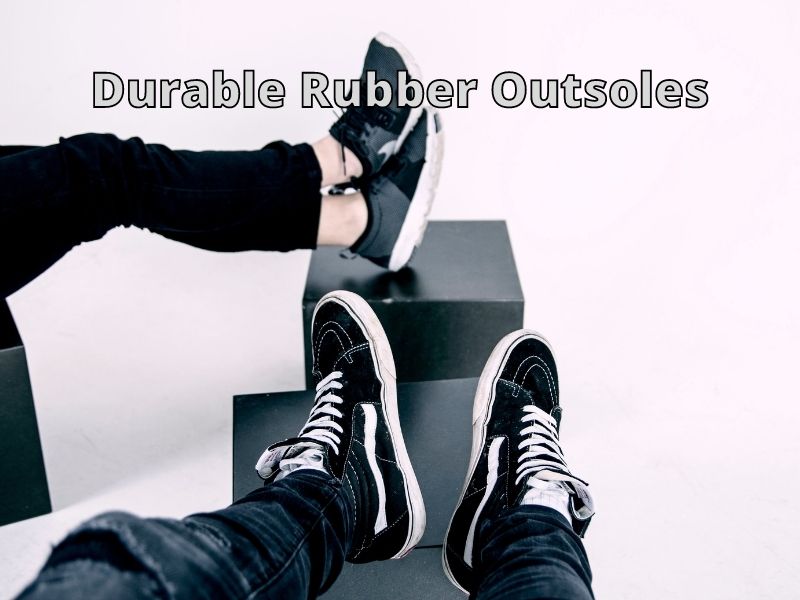
The main raw materials used to make Vans shoes are high-quality and durable rubber and PVC. In addition, Vans shoes have incredibly soft rubber soles. As a result, they are highly non-slip, even on wet floors. So, you can comfortably wear them at work without worrying about slips and trips.
Rubber is an excellent non-slip material to use in a shoe. It provides grip, traction, and friction on wet or oily surfaces. In addition, it prevents you from slipping. But not all rubbers are of high quality.
Rubber has many slip-resistant characteristics as compared to other outsole materials. Therefore, outsoles made of rubber are less likely to slip on wet surfaces.
Although rubber-soled shoes may provide good traction on oily and greasy floors, remember that not all rubber-soled shoes are designed to be worn on slippery surfaces. Some are non-slip shoes, but they are designed to wear on dry surfaces, such as tennis and basketball shoes.
High-Quality Material

The extent to which your shoe resists slipping is indicated by the quality of the material used. For example, the higher the quality of rubber, the better the grip. Similarly, shoes made with low-quality rubber are more likely to slip on wet floors.
Apart from rubber outsoles, the high quality of rubber material used in Vans makes them exceptional non-slip. These shoes are constructed with top-notch rubber, providing excellent traction between the outsole and slippery surface.
Vans use a combination of high-quality synthetic and natural rubber to make the soles and sides of their shoes. Whenever you walk or run in Vans’ shoes, you’ll experience friction with the floor so that you won’t slide. While walking in Vans, your feet will have a comfortable grip on the surface, which minimizes the likelihood of slipping.
The construction of Vans shoes also involves a special process called vulcanization. During this process, the rubber is baked. The rubber is cured by heat and then compressed.
Here are a few benefits of the vulcanization process
- It makes the rubber Extremely resilient.
- The rubber Retains its original form.
- Makes the rubber Not affected by organic solvents
- Makes the rubber an Electrical insulator.
- Makes the rubber Resistant to oxidation and abrasion
- Limits the water absorption
Vans don’t use synthetic materials such as EVA foam in their shoes since they can melt down during the vulcanizing process. Instead, they use rubber, suede, or canvas for the uppers of shoes because they can bear the high temperatures during manufacturing.
Slip-Resistant Tread Patterns
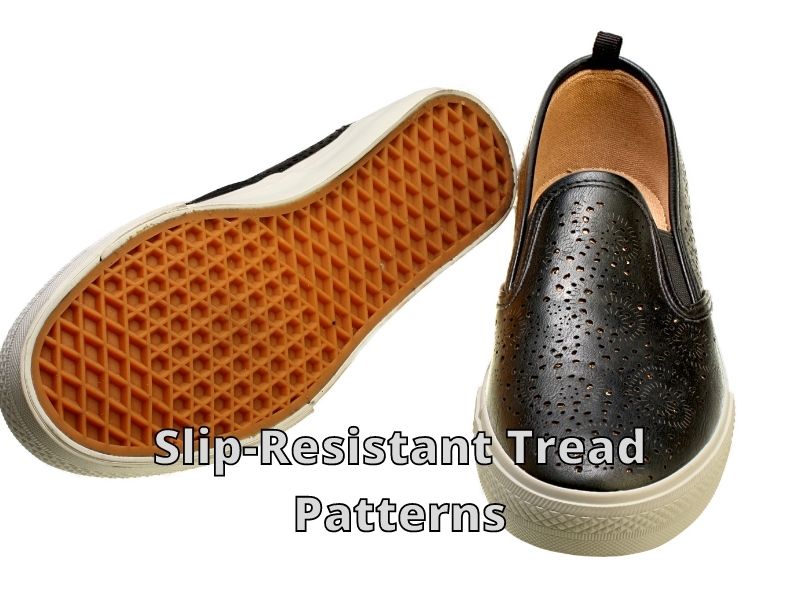
Another important feature of Vans is the tread pattern which makes them non-slip.
You might think tread won’t do much for slip resistance, but that’s not true. Actually, the tread is the part of the shoe that is in direct contact with the floor; its pattern should provide slip resistance.
The Vans tread pattern is carefully designed to make them even more slip-resistant and stable. The design on Vans’ treads provides adequate friction, grip, and traction.
The tread pattern on the soles of the Vans is a combination of diamond and rhombus throughout the sole to prevent water or other liquids from sticking to the shoe. This is why Vans provide maximum grip and traction on wet and greasy floors.
Are All Vans Non-Slip?

The short answer would be YES! Almost all classic Vans are non-slip because of their rubber outsoles and tread pattern. Since rubber is resistant to water, it makes its outsoles slip-resistant.
All classic-styled Vans shoes have non slip tread pattern on the outsoles, a unique Vans trademark. These classic styles include; Sk8-His, Slip-on Vans, Old Skools, and the Authentic Vans. As a result, they will never give you any slipping or falling issues.
Surfaces On Which Vans Are Non-Slip
Although Vans are generally non-slippery, let’s look at some surfaces to find their level of slip resistance. Here are four different types of surfaces
On Tarmac
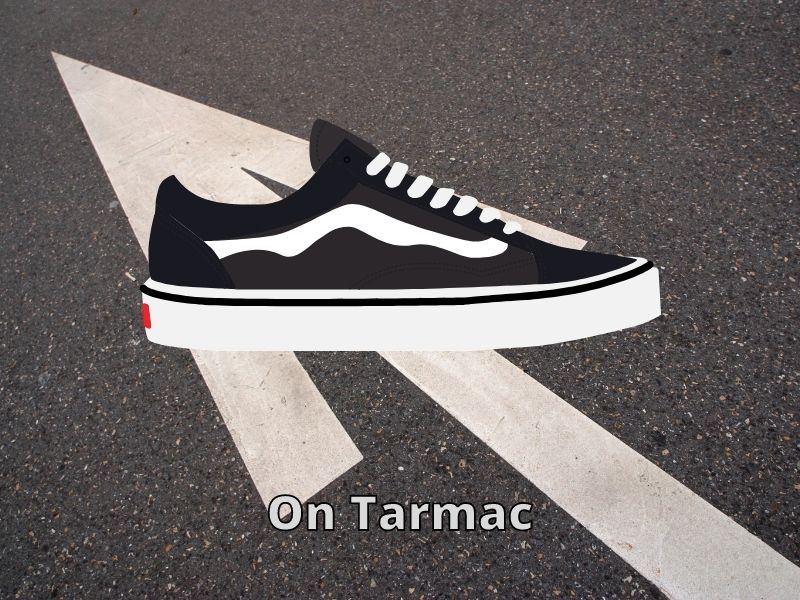
Vans are extremely non-slip on the tarmac. As a result, their slip resistance is great while walking on tarmac. This may also be because tarmac itself has some traction. So, walking and running in Vans on tarmac is pretty much safe.
You won’t experience slipping or falling while walking in Vans on the tarmac. Vans are ideal for winter or rainy days; you can wear them on the tarmac. Even if the tarmac is wet or greasy, you can still walk on it wearing your van’s shoes.
On Tile
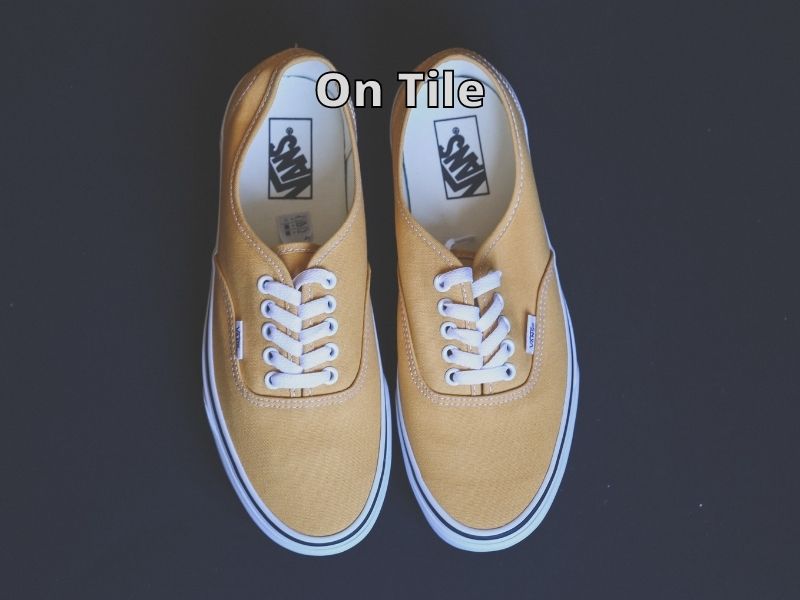
Vans are also excellent non-slip shoes on tiles. So, if your office or workplace has tiled floors, you can wear your Vans without worrying about slipping or sliding. You don’t have to worry about scuffing your foot on the tile. Vans hold up pretty well.
Nevertheless, I suggest being careful while walking on tiles with Vans shoes. Likewise, avoid puddles, wet tiles, and running on tiles. However, if you’re cleaning a wet tiled floor, tread carefully. Because you do not know how much slip resistance rubber soles could provide.
On Concrete
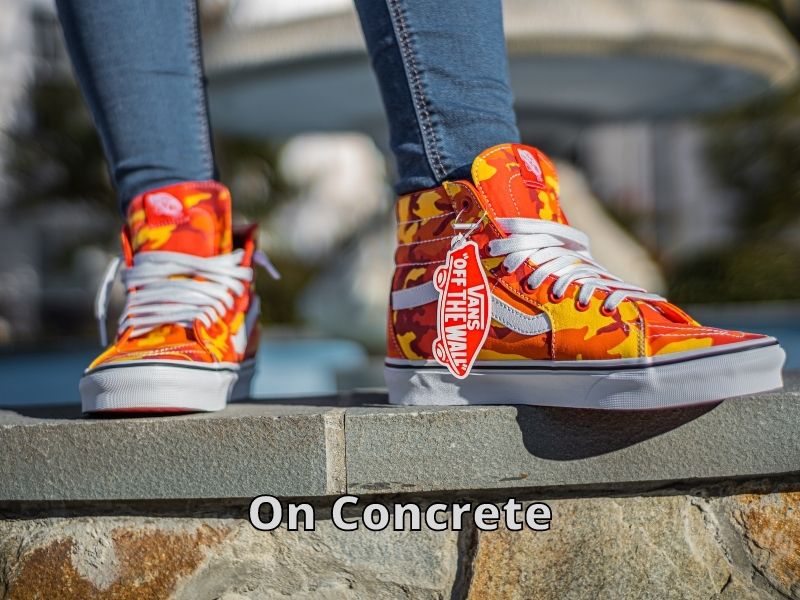
Vans are pretty great non-slip on dry concrete surfaces. They will provide excellent great grip and traction. You can even run or skid on dry concrete in your Vans.
However, If the concrete is wet, you need to be a little more careful when wearing Vans. Although Vans still provide slip resistance on wet concrete, I recommend being cautious since concrete is a smooth surface.
Another important factor to consider is that if the concrete is covered in moss, you need to be very careful when walking on it. Because moss is highly slippery and even shoes with excellent slip resistance cannot provide traction
Further, if you see any oil on concrete, avoid walking on it. Because concrete is already slippery, the oil will further increase its slipperiness. So, if the concrete is dry and free of oil and moss, you can run, walk, and skid in your Vans on it.
On Laminate Flooring
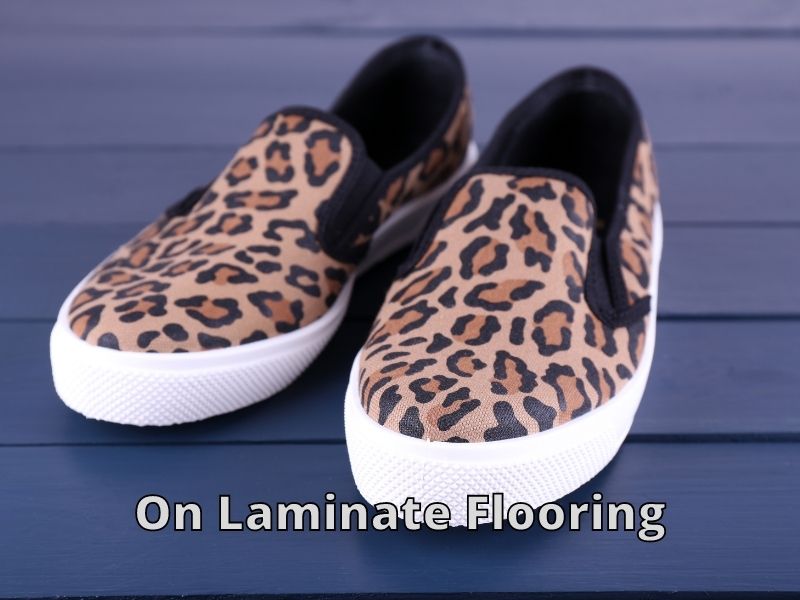
The laminate flooring is super slippery. It becomes more slippery if it is wet or has something spilled on it. However, Vans can provide slip resistance and traction on a dry laminate surface. You can walk well on wet laminate surfaces but shouldn’t run or skid on them.
Vans stuck pretty well to laminate. So, you can wear your Vans on laminate flooring even for long hours. They will provide comfort, adequate grip, and traction, so you won’t have to worry.
How To Increase the Traction of Vans?
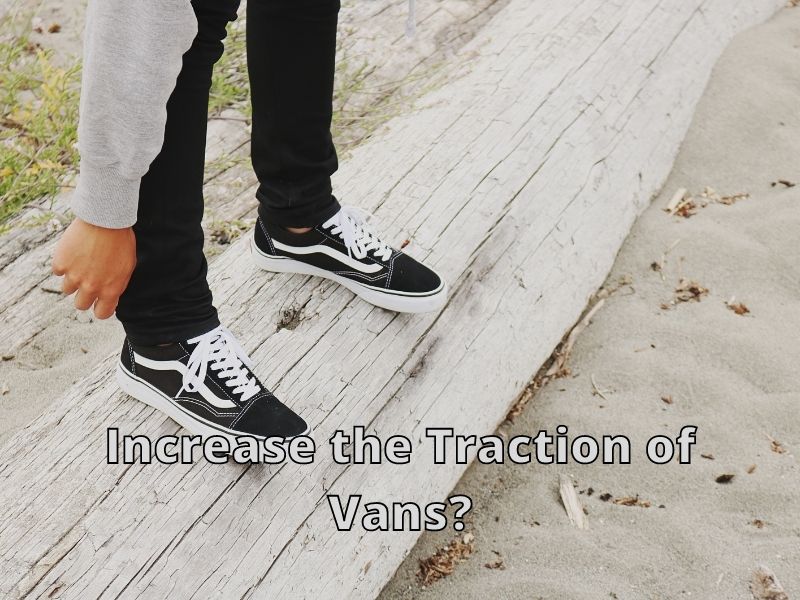
Vans provide adequate grip and traction for snowboarding, skateboarding, and other activities. Additionally, they are perfect for offices and other workspaces if you need comfortable shoes for long hours.
Most workplaces require you to wear non-slip shoes. For example, if you work in a hospital, a restaurant, or an office with slippery floors, you need shoes with maximum slip resistance. In these situations, if you want to increase your Vans’ traction, here are some easy ways to do so:
Attach Non-Slip Soles to Your Vans
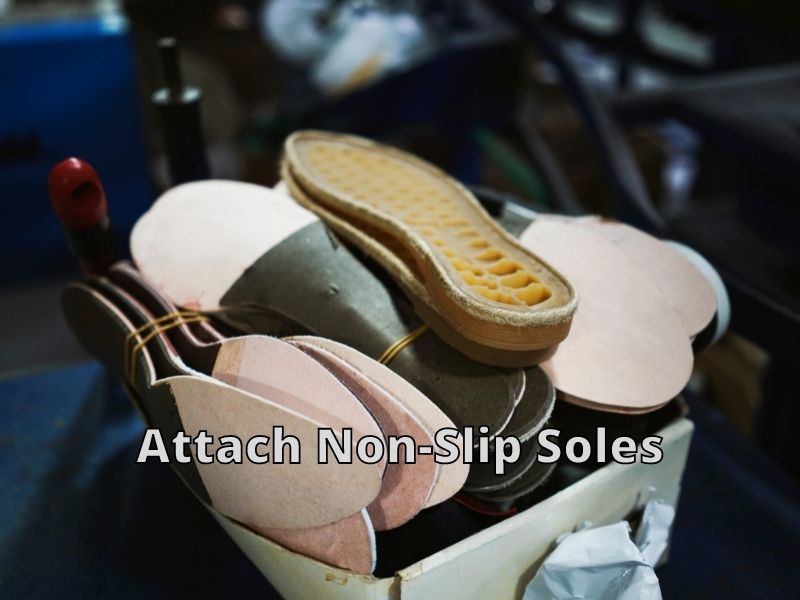
One of the easiest ways to increase the traction of Vans shoes is by adding non-slip soles. You can get them from any cobbler or shoe store at a reasonable price.
Simply attach the non-slip sole to the existing sole of your Vans, and you’re good to go. It is especially useful when cleaning floors or skating on wet surfaces.
Attach Non-Slip Pads to Your Vans
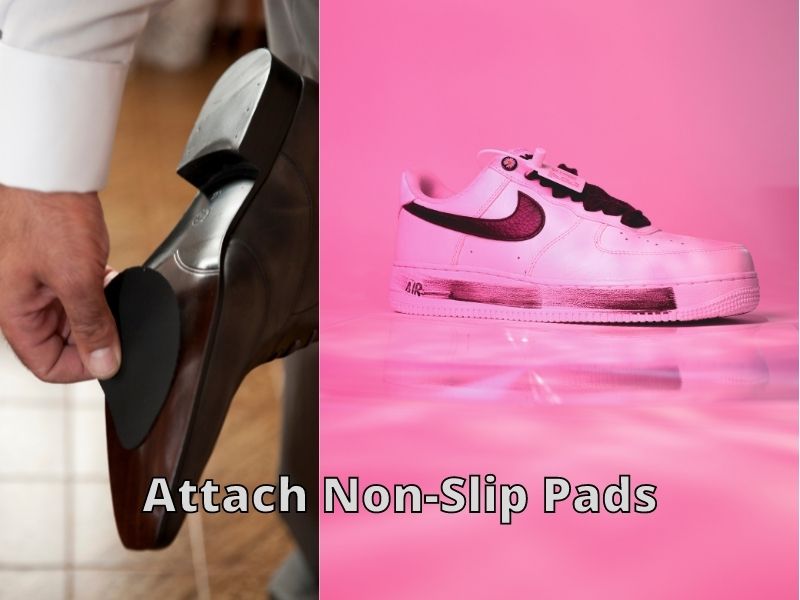
Adding non-slip pads to the soles of your Vans is a great option if you’re a restaurant worker or have mopping duties. These pads give your Vans an extra traction layer and add more grip. In addition, they work great when dealing with wet floors with spills or liquids.
Scuff The Soles of Your Vans
This is especially useful for brand new Vans to add grit to them. Scuff the soles of your Vans on rough surfaces like cement. You can also rub their soles against a brick wall. With a few rubs, you will see the sloppiness will reduce, and you can now use them for non-slip purposes.
Apply Slip-Resistant Spray on Your Vans

Applying slip-resistant traction spray on your Vans is a quick fix. These traction sprays add an adhesive layer to your Vans’ soles that improve their grip and slip resistance.
I recommend using a spray designed for rubber soles for your Vans so you won’t have to worry about damaging them. These sprays are water resistant, long-lasting, and do not wash off easily.
Just spray it on the soles of your Vans before each use. These slip-resistant sprays ensure your safety and save you from slipping and falling on any surface.
Add Ice Grips to Your Vans
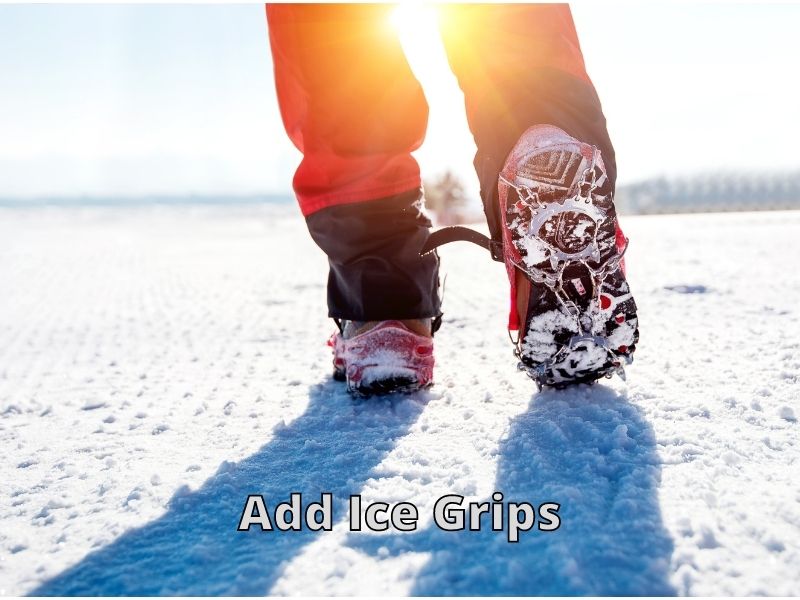
A pair of ice grips on your Vans is very helpful if you plan to wear them during icy conditions. Simply fasten them onto the outsoles of your Vans.
The ice grips puncture the ice while you walk and prevent you from slipping or sliding. These snow or ice grip are great for winter and rainy weather.
Vans shoes are already non-slip; however, these simple techniques will make them even stickier and prevent you from slipping. These hacks are especially important if you are a shift worker or skater, so you’d need some extra slip resistance.
| Hacks | How does It work? |
|---|---|
| Use Acrylic Paint | Apply acrylic paint to the soles of your Vans. As the paint dries, it expands and puffs up, providing traction and preventing slippage. |
| Use Sandpaper | Sandpaper can make any surface rough. Rub the sandpaper on your Vans’ soles to roughen it up. It will take a few rubs for the soles to become rough, making them less likely to slip. |
| Use A Nail Filer | Grab a nail filer and scrub the soles of your Vans. The nail filer will create a texture on your soles and provide traction. |
| Use Hairspray | Apply a good amount of hairspray to the soles. It will roughen up the surface of your Vans and provide the necessary traction. Make sure you do this before every use. |
| Apply PVC Glue and Salt | Mix some PVC glue with salt. Apply the mixture to the soles of your shoes with a brush. Let them dry for a while. This will create traction for the soles and prevent them from slipping. |
Thanks for visiting helpshoe.com

